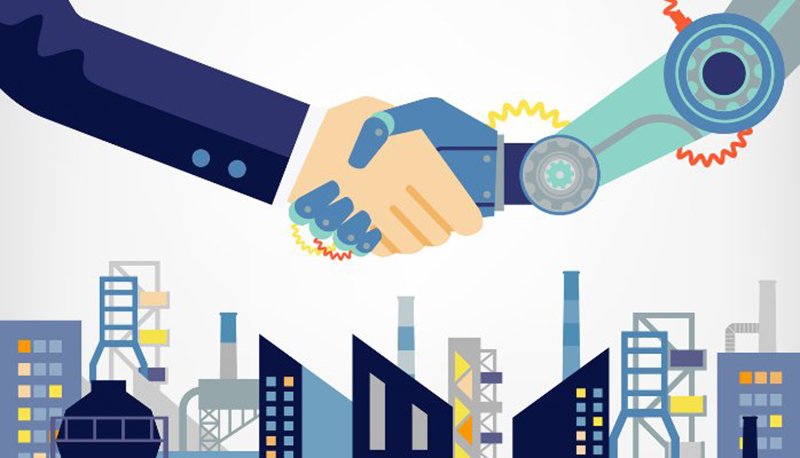Over the years, advances in technology have changed everything from the way we view entertainment, to the way we perform business. Nowhere has this been more apparent than in the manufacturing industry, where automation has now become the norm, and robots have quite literally taken the place of jobs. Although these sound like negatives, technological advances have paved the way for many new, innovative items to be developed. Technology has also helped to minimize waste and make processes much more efficient
In this article, we’re going to take a look at some of the main ways technology is changing the manufacturing process.
Manufacturing has seen a dramatic turnaround since the recession hit in 2009. There are now around 12.3 million jobs in the manufacturing sector, which is a rise of around 1 million. Manufacturing output is also on the rise, in part aided by the increasing use of technology.
Technology is all around us. We use computers and smartphones every day. Our homes are managed using smart devices and if we want to order food in a restaurant, our server takes the order using a small handheld tablet.
The Rise of Technology
The use of technology in manufacturing dates back to the Industrial Revolution, where mill owners sought to increase output in the cotton mills. Today, most of us could not cope without technology and the manufacturing sector is no different. The rise of modern technology first took hold in the 80s when electronics, nanotechnology and advanced materials first came to the fore.
Technology 4.0
Many experts believe we are now in the midst of a fourth industrial revolution where new technologies such as nanotechnology and photonics are upgrading old technologies. New sectors are opening up and the future is bright for manufacturing.
The rise of digital technology has enabled smaller manufacturers to compete with the big boys in the global marketplace. They can connect with customers all over the world and work to order from micro factories.
Automated systems and complex machinery have revolutionized mass production. Increased output has slashed manufacturing costs, which in turn has led to cheaper costs on the high street. Electronic gadgets are now cheaper than ever, which in part is down to the low cost of manufacturing. However, it’s important to note that while automation can bring many benefits, it can also introduce new challenges. For example, a pressure drop affecting your processing system can lead to downtime and reduced efficiency. It’s crucial to monitor and maintain your equipment to avoid such issues and ensure optimal performance.
3D Technology
3D design technology has enabled manufacturers to create detailed components quickly and economically. 3D technology has revolutionized the industry. Smaller manufacturers have embraced 3D printing technology. It is perfect for low volume, high-quality manufacturing of children’s toys and small electronic goods. Thanks to the wonders of 3D printing, small inventors and innovators can now become global manufacturers.
Industrial Robotics
The use of industrial robots is playing a big role in the resurgence of manufacturing as a major contributor to GDP. There are around 237k robots on manufacturing production lines in the US, but considerably more in Japan, where electronics manufacturing is big business.
Once upon a time, factories relied on humans to assemble complex pieces of electronics and engineering. Output was slow and laborious and human beings make errors. It took a while for the introduction of robots to take hold. In the beginning, robots were expensive and there was a great deal of resistance to the notion of robots stealing workers’ jobs. However, as technology advanced, automation began to find its way into various industries, including the production of hamburger patties, where robots could ensure consistent quality and efficiency, alleviating some of the labor-intensive tasks previously performed by humans.
There is some truth to this statement, but the situation is nowhere near as disastrous as people once feared. Robots do a better job than humans. They are more precise and can handle complex tasks on production lines. Robots don’t need to take comfort breaks and they don’t become unionized, which is a major bonus for manufacturing plants.
Technology eliminates human error where safety is paramount. Ballprobe sensors take care of production line sampling where the risk of contamination is high. In a high-risk medical laboratory environment, this type of technology is priceless.
Car manufacturing is a prime example of how production line robotics has increased efficiency and output. For instance, Robafoam uses foam sealing technology for automotive parts sealing production. Its “Smart” manufacturing has enabled auto manufacturers to keep their costs low and stay in business, despite tough economic conditions. In the last six years, robots have increased manufacturing production output by up to 20% in some sectors, but although the number of manufacturing jobs has risen too, the increase is nowhere near as high.
Concern over the Loss of Jobs
Despite the concern over technology replacing human jobs, technology continues to be a valuable addition in the manufacturing sector and it is vital that schools continue to push students into STEM subjects. Today’s kids are the future of the industry, so they need relevant skills to drive US manufacturing forward to even greater success in the world marketplace.
TechnologyHQ is a platform about business insights, tech, 4IR, digital transformation, AI, Blockchain, Cybersecurity, and social media for businesses.
We manage social media groups with more than 200,000 members with almost 100% engagement.








































